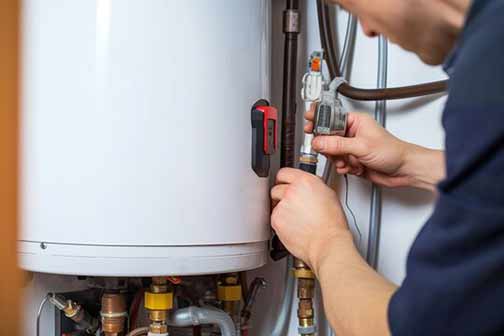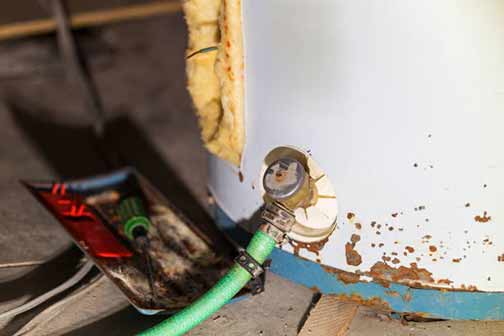
A water heater that produces enough hot water for your family’s needs without costing a ton of money to maintain is something every homeowner wants, says Equity Management. However, taking the appropriate steps to ensure the function and longevity of their water heater is something many householders struggle with.
That happens because many homeowners don’t have a checklist or schedule for looking after their water heater. They try to do it by heart and all at once or simply ignore the water heater until a water heater emergency in their home forces them to take notice.
That is not the best way to manage your water heater. This approach costs money and exposes your home to the risk of avoidable water damage. To help you solve the problem, our plumbers at Suburban Plumbing Experts have created a list of easy-to-follow tips for maintaining your water heater.
General tips and guidelines
Ensure proper ventilation
Water heaters should always be installed in a well-ventilated area. Proper airflow is vital, especially for gas water heaters, to ensure the elimination of by-products like carbon monoxide. Adequate ventilation is also essential for electric water heaters.
Optimum temperature settings
The safe temperature level for your water heater is usually between 12°F and 130°F (49°C -54°C). This temperature range reduces the risk of scalding and burns. You will also reduce the unit’s energy consumption without compromising your comfort.
Insulate your tank and pipes
Insulating the inlet/outlet pipes and the tank allows you to improve the unit’s energy efficiency by minimizing heat loss. In addition to cutting costs, you reduce the workload on the water heater, significantly extending its life.
Install a drip pan
Placing a drip pan below the tank will prevent water damage to the surrounding areas in the event of a leak. Without a drip pan, it can be hard to tell if there are moisture issues around the water heater.
Water heater inspection tips
Check the TPR Valve
The TPR valve protects the unit from excessive buildup of heat and pressure by opening to release some excess. Check the valve to see if water flows when you lift it and stops when you release it.
Inspect the anode rod
The anode rod protects the unit by drawing away corrosive elements that would have attacked the tank. With time, the anode rod becomes corroded, losing its efficiency. The anode rod should be replaced if more than six inches of its core is exposed.
Check for leaks and corrosion
Because water heaters handle a lot of water, leaks and corrosion are a common problem. Common sites for leaks, rust and corrosion are the tank, pipes, and connections. Contact a professional plumber nearby if you find signs of rust or leakage.
Examine the burner
For gas-powered water heaters, efficient combustion is essential for optimal performance. To evaluate the burner, check the flame to see if it has a clean blue flame. A yellow or flickering flame is a sign of contaminants or incomplete combustion.

Tips for draining and flushing the water heater
Turn off the water heater
Before attempting to drain the tank, ensure that the water heater is not on. Follow proper safety procedures when turning off the gas or electricity supply. Double-check to make sure that this has been done.
Attach a hose to the drain valve
You will find this at the bottom of the tank. Before you open the drain valve extend the other end of the hose to a safe discharge location. Let the water flow until there is no more sediment in it.
Flush out the debris
To remove any debris inside the tank, close the drain valve and open the cold water supply to refill the tank. After filling the tank, open the drain valve again and let the water flow until it runs clear.
Recognizing the signs of water heater malfunction
Insufficient hot water
If your water heater is not supplying as much hot water as it used to, or the water suddenly runs cold during use, the unit needs repair.
Strange noises
Clanging, rumbling, and hissing sounds from the water heater are signs of excessive sediment buildup inside the tank.
Discolored or smelly water
Water discoloration usually means a lot of rust is inside the tank. Foul-smelling water from the unit signifies massive bacterial growth within the tank.
Conclusion
To conclude, it is essential to educate household members on proper safety and emergency procedures for the water heater. Ensure everyone knows the location of the water heater and how to shut off the electricity, water or gas supply.
Finally, if your tank is over ten years old, you should replace the water heater entirely. The average lifespan for a water heater is 8-12 years. After its tenth year, a water heater will become less efficient and increasingly unsafe.

